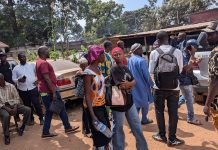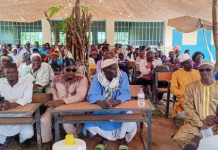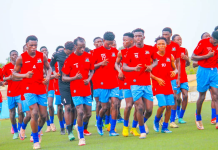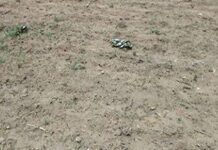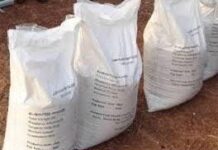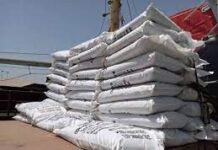 people in the rural area in terms of how they are facilitating or
hindering their development.
The column has been highlighting the situation of the Rural Women in
terms of poverty, drudgery in the absence of labour saving devices,their lack of control and ownership of land which is key to any
agricultural activities and so on.
It was stated in previous editions that women risk their health in
order to put bread on the table and that they work under scotching
sun, without sunscreen, working on the farm, garden, processing food,
fetching water or doing laundry.
With no employment opportunities in the Rural Gambia other than the
farm, poverty is taking a dramatic toll as women lack control and
ownership of the key factor of agricultural production which is land.
In this edition, we shall bring to the attention of our readers the
concerns of the rural people with regard to the exploitation they are
subjected to, which compounds their poverty and hardship.
To begin, it is apt to state that research has shown that poverty is
rife in the rural area and that over sixty percent of rural families
live on incomes below the designated poverty line.
Based on this, it is imperative that any programme aimed at improving
the standard of living and long-term economic stability in the rural
area should hinge itself on the premise of further developing and
sustaining agriculture, the resource base from which rural incomes are
derived as well as establishing credit facilities where rural people
can access funds that do not attract unbearable interest rates.
During my visit to the rural area, the people explained that it will
be very difficult to eradicate the poverty of the rural people without
establishing a cooperative marketing Board that will not only purchase
the produce of the rural people but give them sub loan during the lean
period which is July to October.
According to Burama Manjang, with no employment opportunities in the
Rural Gambia other than the farm, poverty is taking a dramatic toll on
the rural dwellers because they are exploited by middlemen and local
traders during lean period.
When asked to explain, he indicated that middlemen and local traders
will give them cash which they will pay back when they harvest their
produce at prices that are far below the normal market prices for the
produce.
For example, the middlemen give them D7 per Kilogram of millet while
in the market, a kilogram of millet is sold for D12. For groundnut,
they give them D500 per bag when they harvest, while the market price
is D1,200.
“This practice is what is compounding our poverty in the rural area,”
Burama Manjang lamented.
Mariama Jallow a rural dweller asserted that the previous practice of
the Gambia Cooperative Union in which rural people sell their produce
to Union and received loans from the Union during the lean period,
freed them from the trappings of the middlemen.
She called on Government to come up with such strategies to mitigate
the main cause of their poverty.]]>
people in the rural area in terms of how they are facilitating or
hindering their development.
The column has been highlighting the situation of the Rural Women in
terms of poverty, drudgery in the absence of labour saving devices,their lack of control and ownership of land which is key to any
agricultural activities and so on.
It was stated in previous editions that women risk their health in
order to put bread on the table and that they work under scotching
sun, without sunscreen, working on the farm, garden, processing food,
fetching water or doing laundry.
With no employment opportunities in the Rural Gambia other than the
farm, poverty is taking a dramatic toll as women lack control and
ownership of the key factor of agricultural production which is land.
In this edition, we shall bring to the attention of our readers the
concerns of the rural people with regard to the exploitation they are
subjected to, which compounds their poverty and hardship.
To begin, it is apt to state that research has shown that poverty is
rife in the rural area and that over sixty percent of rural families
live on incomes below the designated poverty line.
Based on this, it is imperative that any programme aimed at improving
the standard of living and long-term economic stability in the rural
area should hinge itself on the premise of further developing and
sustaining agriculture, the resource base from which rural incomes are
derived as well as establishing credit facilities where rural people
can access funds that do not attract unbearable interest rates.
During my visit to the rural area, the people explained that it will
be very difficult to eradicate the poverty of the rural people without
establishing a cooperative marketing Board that will not only purchase
the produce of the rural people but give them sub loan during the lean
period which is July to October.
According to Burama Manjang, with no employment opportunities in the
Rural Gambia other than the farm, poverty is taking a dramatic toll on
the rural dwellers because they are exploited by middlemen and local
traders during lean period.
When asked to explain, he indicated that middlemen and local traders
will give them cash which they will pay back when they harvest their
produce at prices that are far below the normal market prices for the
produce.
For example, the middlemen give them D7 per Kilogram of millet while
in the market, a kilogram of millet is sold for D12. For groundnut,
they give them D500 per bag when they harvest, while the market price
is D1,200.
“This practice is what is compounding our poverty in the rural area,”
Burama Manjang lamented.
Mariama Jallow a rural dweller asserted that the previous practice of
the Gambia Cooperative Union in which rural people sell their produce
to Union and received loans from the Union during the lean period,
freed them from the trappings of the middlemen.
She called on Government to come up with such strategies to mitigate
the main cause of their poverty.]]>


